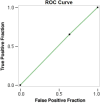Assessment of commercially available artificial intelligence software for differentiating hemorrhage from contrast on head CT following thrombolysis for ischemic stroke
- PMID: 40103936
- PMCID: PMC11915465
- DOI: 10.3389/fneur.2025.1458142
Assessment of commercially available artificial intelligence software for differentiating hemorrhage from contrast on head CT following thrombolysis for ischemic stroke
Abstract
Background: In patients who have undergone ischemic stroke therapy, retained iodine-based contrast can resemble acute intracranial hemorrhage (ICH) on standard computed tomography (CT). The purpose of this study is to determine the accuracy of commercially available artificial intelligence software for differentiating hemorrhage from contrast in such cases.
Methods: A total of 45 CT scans analyzed by Aidoc software that also included dual-energy iodine subtraction maps from dual energy CT from 23 unique patients (12 male, 11 female, age range 30-99 years, mean age 67.6 years, standard deviation 18.5 years) following recent ischemic stroke therapy were retrospectively reviewed for the presence of hemorrhage versus retained contrast material.
Results: The sensitivity and specificity of the model in detecting acute intracranial hemorrhage as opposed to contrast were 51.7 and 50.0%, respectively. The positive and negative predictive values were 65.2 and 36.4%, respectively.
Conclusion: The current Aidoc software is not optimized for differentiating between acute hemorrhage and retained contrast on CT. This justifies the development of a more robust artificial intelligence model trained to differentiate between ICH and iodine contrast based on both DECT and standard CT images.
Keywords: artificial intelligence; commercial AI; contrast CT; dual energy CT; intracranial hemorrhage.
Copyright © 2025 Olsen and Ginat.
Conflict of interest statement
The authors declare that the research was conducted in the absence of any commercial or financial relationships that could be construed as a potential conflict of interest. The author(s) declared that they were an editorial board member of Frontiers, at the time of submission. This had no impact on the peer review process and the final decision.
Figures




Similar articles
-
A Novel Dual-Energy CT Method for Detection and Differentiation of Intracerebral Hemorrhage From Contrast Extravasation in Stroke Patients After Endovascular Thrombectomy : Feasibility and First Results.Clin Neuroradiol. 2023 Mar;33(1):171-177. doi: 10.1007/s00062-022-01198-3. Epub 2022 Aug 12. Clin Neuroradiol. 2023. PMID: 35960327 Free PMC article.
-
Early diagnosis and prediction of intracranial hemorrhage using dual-energy computed tomography after mechanical thrombectomy in patients with acute ischemic stroke.Clin Neurol Neurosurg. 2021 Apr;203:106551. doi: 10.1016/j.clineuro.2021.106551. Epub 2021 Feb 10. Clin Neurol Neurosurg. 2021. PMID: 33636506
-
Dual-Energy CT Follow-Up After Stroke Thrombolysis Alters Assessment of Hemorrhagic Complications.Front Neurol. 2020 May 19;11:357. doi: 10.3389/fneur.2020.00357. eCollection 2020. Front Neurol. 2020. PMID: 32508735 Free PMC article.
-
Software with artificial intelligence-derived algorithms for analysing CT brain scans in people with a suspected acute stroke: a systematic review and cost-effectiveness analysis.Health Technol Assess. 2024 Mar;28(11):1-204. doi: 10.3310/RDPA1487. Health Technol Assess. 2024. PMID: 38512017 Free PMC article.
-
Diagnostic accuracy of dual-energy computed tomography to differentiate intracerebral hemorrhage from contrast extravasation after endovascular thrombectomy for acute ischemic stroke: systematic review and meta-analysis.Eur Radiol. 2022 Jan;32(1):432-441. doi: 10.1007/s00330-021-08212-1. Epub 2021 Jul 29. Eur Radiol. 2022. PMID: 34327578
References
-
- Yaghi S, Willey JZ, Cucchiara B, Goldstein JN, Gonzales NR, Khatri P, et al. . American Heart Association stroke council; council on cardiovascular and stroke nursing; council on clinical cardiology; and council on quality of care and outcomes research. Treatment and outcome of hemorrhagic transformation after intravenous Alteplase in acute ischemic stroke: a scientific statement for healthcare professionals from the American Heart Association/American Stroke Association. Stroke. (2017) 48:e343–61. doi: 10.1161/STR.0000000000000152 - DOI - PubMed
LinkOut - more resources
Full Text Sources

